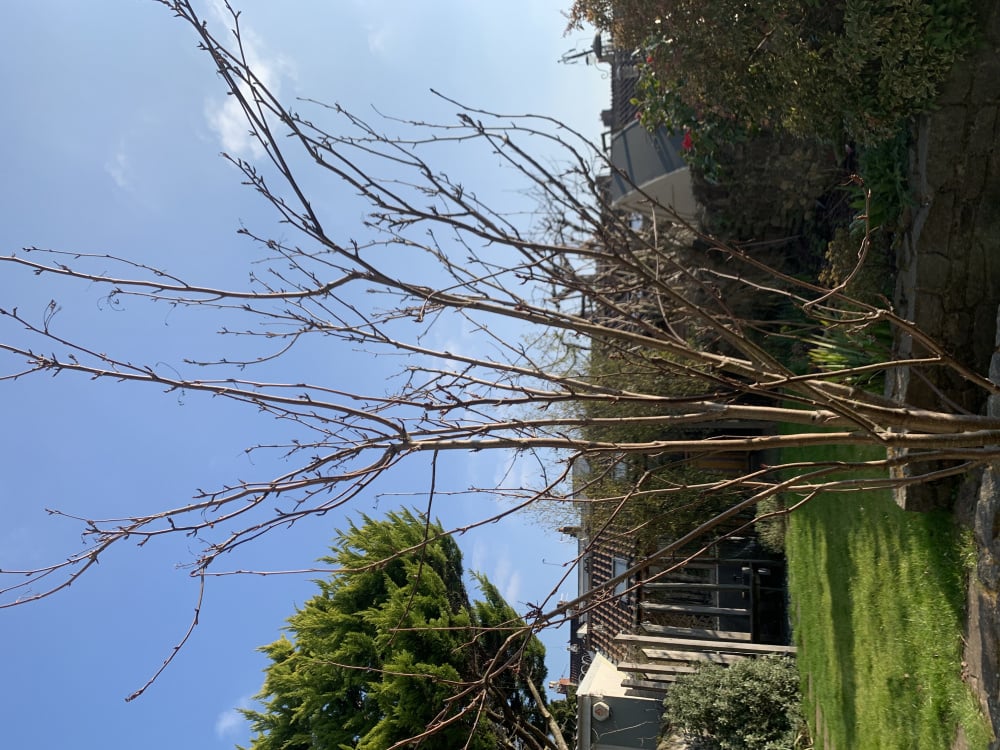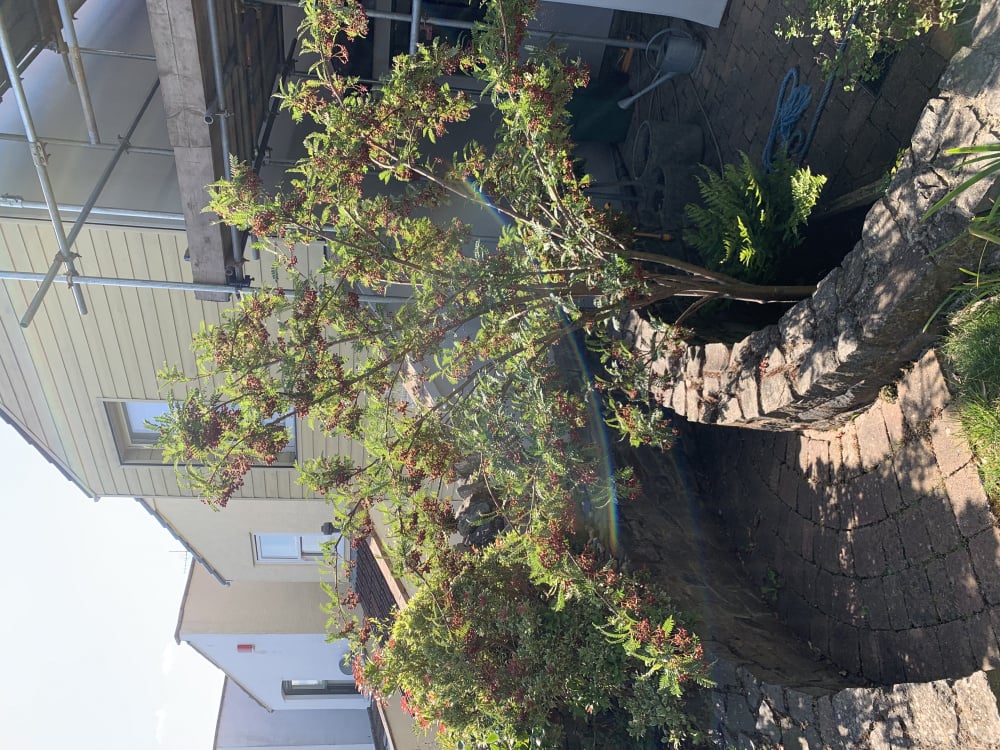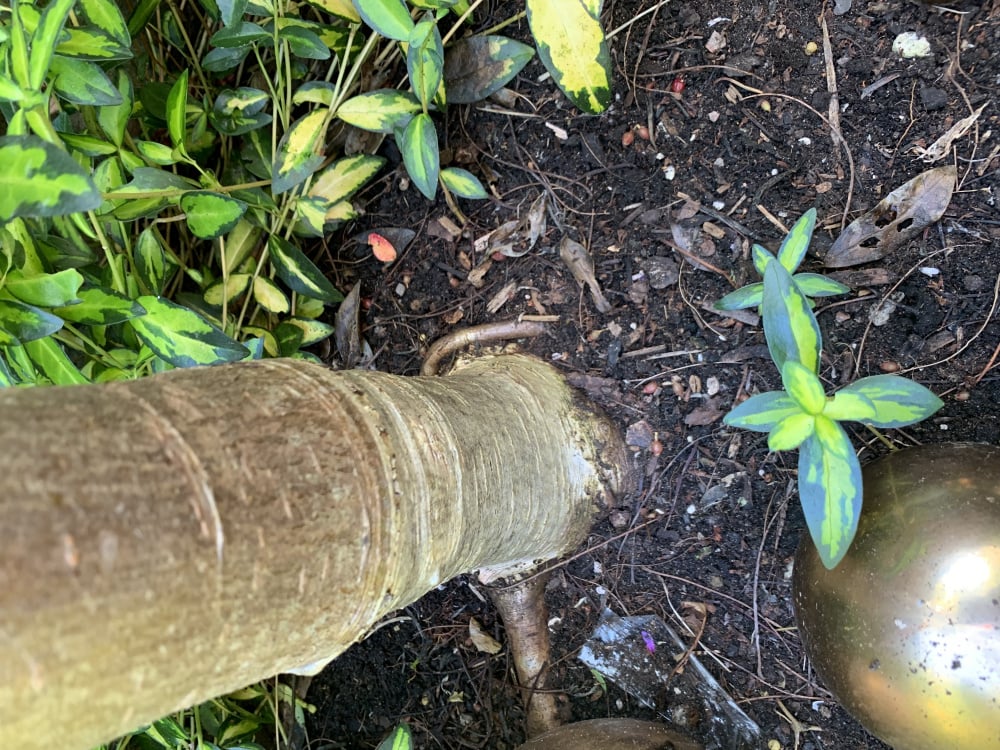This Forum will close on Wednesday 27 March, 2024. Please refer to the announcement on the Discussions page for further detail.
Sorbus pseudovilmorinii berries too heavy
My 7 year old Sorbus pseudovilmorinii has a massive crop of berries this year and the crazily long, whippy branches are bending down, resting on other plants and blocking the path.





Should we remove some of the fruit to avoid the branches breaking? What would the long term solution be to creating a stronger branch structure?
The tree leans toward the sun (over the path) and has very long branches which fork at the ends. I’ve been too scared to prune any back - I think I’m not supposed to? But it’s looking a bit daft now.
Photos show bare in March, first leaves in May and current state (July). In March I thought I should be doing something about the branch forking, but never quite got round to it!
I’ve also noticed a potential problem with root girdling - should I cut that root out? The tree rocks front to back if pushed but not side to side.





0
Posts
It's still a relatively young plant looking at your 2nd last pic, and will mature and strengthen as it does so, but if you're able to move it so easily, it suggests it hasn't been properly staked, and therefore isn't as stable as it should be. Those roots shouldn't be so evident at the base.
The berries on rowans do tend to be fairly heavy on young, new branches but it isn't usually a problem - it's how they grow. You can certainly remove some fruit if you feel they're getting in the way, or you can remove some of the lower branches [better done when dormant] but the main problem is where and how it's been planted.
If you're confident, you could move it to a better site later in the year as it's very near that wall which will also be drier. If it's not been planted for more than few years that's not too difficult
I live in west central Scotland - not where that photo is...
You can still add a stake, but you'd just have to take care about positioning it. Ideally, an angled one low down on the trunk is the best way, with the top end into the prevailing wind, so it depends which direction that comes in from. In many cases, two are needed, but that's usually for more exposed, windy sites, and you'd need to bear in mind that the wall would be in the way if the wind comes towards it from the house side, because it would be impossible to get a stake in from the correct side. Doing angled stakes also means the roots aren't compromised by them being put in. Staking is done on planting to avoid that problem, but as you say - if you didn't do it when replanting, that's the error and you'll have to do the best you can with it now to get it stabilised.
The only other way of doing it in your site is an H frame. That's as it suggests - two battens, one each side, with one across the main trunk, and the trunk tied in correctly to the horizontal. As the trunk isn't very long, that means it would need to be really sturdy as it would be lower down, but the main factor is tying in securely, but leaving enough room for the trunk to mature. It will need checking regularly to see it isn't getting rubbed by the tie, so it's a fine balance. Using proper rubber ties is best, but you can also use things like old tights or sleeves from jumpers or similar. Anything that can be secured well to the frame, then tied more gently round the tree.
Again, making the uprights a reasonable distance from the trunk is important to avoid damaging the roots. That's really the only solution to get it secure and avoid it failing later when it becomes heftier.
Fingers crossed for you.
I live in west central Scotland - not where that photo is...
It can be difficult if you remove branches, or partially cut them back, but those should/will harden up, and these swings in speed of growth are quite common, so it might be best to just wait and see how it is over summer and into autumn. Trees can be a bit like that, and there's often points at which you swither about removing or leaving branches.
Those do become quite a decent size when happy, and they have a reasonably big spread, so you may have to just see how it goes. I know that's a bit vague, but trees can be like that - and they grow and evolve at different speeds according to conditions. You could find it outgrows that site in a few years, and then you'll have a decision about cutting back or removing.
I live in west central Scotland - not where that photo is...
I live in west central Scotland - not where that photo is...
I live in west central Scotland - not where that photo is...